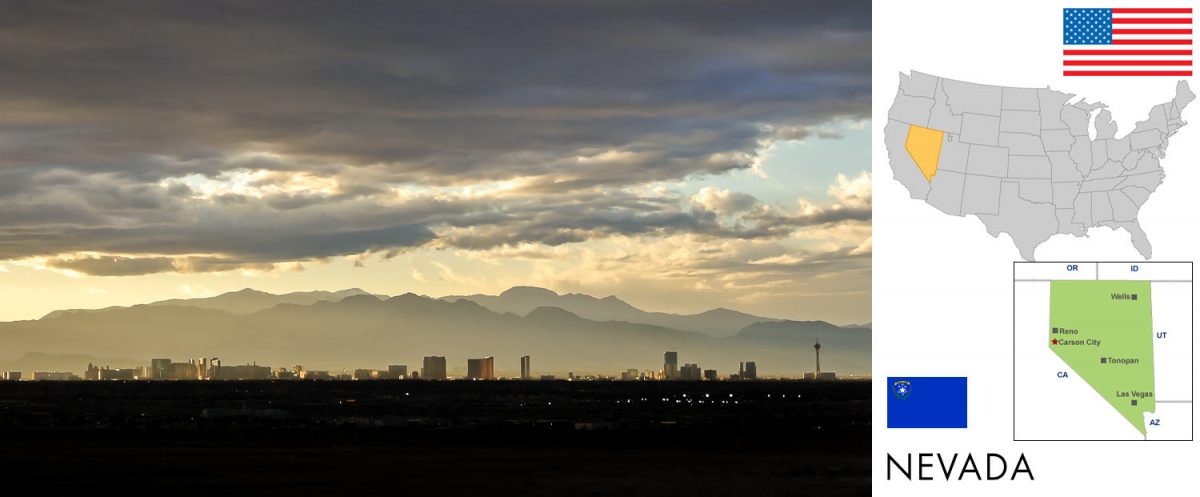
Nevada’s history is rooted in the Wild West, from cowboys and Indians to train robberies and silver and gold mines. Though much has changed over the decades – Nevada now draws more than 50 million visitors each year and attracts international audiences – much of the allure of the state is still found in its western heritage and wide-open spaces.
Originally belonging to the Native American tribes Washoe, Paiute and Western Shoshone, the area we now know as Nevada was claimed by Mexico before becoming part of the Utah Territory and eventually attaining statehood in 1864.
Many famous explorers, including Jedediah Smith, John Fremont and Kit Carson, ventured into the vast expanse of Nevada to find a fast route from the eastern states into the wild frontier of California. Peter Skene Ogden explored what would become Southern Nevada in 1826, followed by Smith and his party just a few months later. In 1829, Antonio Armijo led a party into the present site of Las Vegas by way of the Old Spanish Trail from New Mexico to Los Angeles. Fremont and Carson later trekked through Northern Nevada, in 1844 and discovered Pyramid Lake.
While many temporary towns and trading posts were established throughout the rough Nevada frontier, primarily in Northern Nevada by Mormon settlers and gold miners, the distinction of Nevada’s first town is often given to Mormon Station, which was founded in 1851 near present-day Carson City and was later renamed Genoa. A nearby settlement in what is now Dayton, just a few miles from Genoa, was founded earlier than Genoa but did not flourish, and the debate over which town was Nevada’s first settlement still lingers. However, Dayton holds the claim as the site of the first gold discovery in the state in 1849.
While Nevada is known in part for its history of legalized gambling, it was actually illegal before 1869 and again after 1910.
In 1931, Nevada again legalized casino gambling, this time as a means of raising tax revenues and stabilizing the state’s economy.
With the legalization of gambling came the first casinos on Fremont Street in downtown Las Vegas, which was soon to be known as “Glitter Gulch,” and in 1941, the first hotel-casino on the future Las Vegas Strip opened its doors as the El Rancho Vegas. The construction of the Hoover Dam in the early 1930s cemented Las Vegas as a viable, thriving community. The constant supply of water from the Colorado River made farming dependable and profitable and added an inexpensive source of electricity, allowing for growth and development. In the northern end of the state, Reno was making a name for itself as the “Divorce Capital of the World.” Initially, the Truckee River crossing became a town in the 1860s and in 1868 was named to honor the fallen Union general Jesse Lee Reno.
What to do / Sighseeing
- Las Vegas
- Carson City
- Reno
- Valley of Fire State Park
- Great Basin National Park
- Eureka, Nevada, on Highway 50
- Highway 50
- ET Highway
- Virgin Valley — digging for the Black Opal
- Lake Mead
- St. Thomas – the sunken town in Lake Mead
State Data & Essentials

State Name
Nevada – State Abbr.: NV
Statehood
31-Okt-1864
– Statehood Ranking: 36
Land Area
109,826 square miles (284,439 qkm)
– Land Area Ranking: 7
Population
2,2 Mio (est. 2017); 1,951,269 (2010 Census); 1,998,257 (2000 Census)
Capital
Carson City
Biggest City
Las Vegas
Nickname
The Silver State
Motto
“All for our country”;State Slogan: Battle Born
Highest Point
4.005 m / 13,140 ft (Boundary Peak)
Lowest Point
143 m / 469 ft (Colorado River)
Daylight Saving Time: yes
Tree
Pinon Pine (Pinus monophylla)
Flower
Sagebrush (Artemisia tridentata)
Bird
Mountain Bluebird
Animal
Desert Bighorn Sheep
Song
“Home means Nevada” (by Bertha Raffetto)

